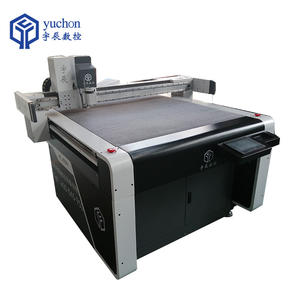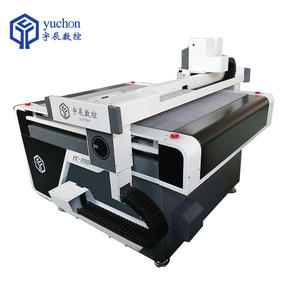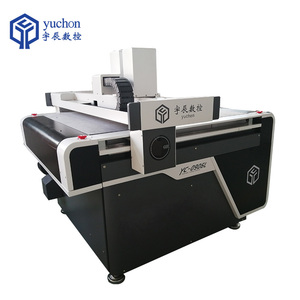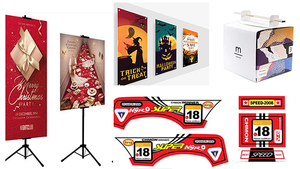
All categories
Featured selections
Trade Assurance
Buyer Central
Help Center
Get the app
Become a supplier

(917 products available)







































An airbrush stencil cutting laser plotter is a revolutionary tool that combines precision engineering with versatility to create intricate stencils for a wide range of applications. These machines are indispensable in industries such as art, signage, automotive customization, and modeling, offering unmatched accuracy and speed. Modern laser plotters feature advanced specifications like engraving speeds of 10-800mm/s, adjustable laser power (50W/80W), and cutting widths up to 1750mm, making them suitable for both small-scale projects and large-scale industrial operations.
For beginners, understanding your needs is the first step toward selecting the right machine. Consider factors like the size of your workspace, the materials you plan to cut, and the complexity of designs you wish to create. For instance, if you're a hobbyist, a desktop laser plotter might suffice, while businesses requiring bulk production should explore industrial models. Focus on key features such as **laser power**, **cutting width**, and **interface type** (e.g., USB, serial port) to ensure compatibility with your workflow.
There are several types of airbrush stencil cutting laser plotters, each tailored to specific needs and use cases:
To compare, here's a table summarizing key attributes:
| Type | Laser Power | Max Cutting Width | Best Use Case |
|---|---|---|---|
| Precision Laser Plotter | 50W/80W | 1600mm | Detailed airbrushing |
| Industrial Laser Plotter | 80W | 1750mm | Bulk stencil production |
| Desktop Laser Plotter | 50W | 1200mm | Hobbyist projects |
Each type has its pros and cons. Precision plotters deliver unmatched detail but may lack speed, while industrial models prioritize efficiency over portability. Desktop plotters strike a balance between performance and space-saving design.
The design of an airbrush stencil cutting laser plotter is a blend of functionality and durability. Common specifications include **machine power** ranging from 400-450W, **engraving thickness** up to 0.8mm, and **knife pressure** adjustable between 0-510g. These parameters ensure adaptability across various materials, including mylar, vinyl, and acrylic sheets.
The choice of materials for construction is critical. For example, aluminum shafts in the paper feed system enhance stability during operation. The use of durable plastics and metals ensures longevity, while lightweight designs improve portability. Properties like density and flexibility play a significant role in determining how well the machine performs under different conditions.
When selecting a plotter, pay attention to features like **DSP controller laser cutter** systems and **CO2 laser cutter and engraver** capabilities, which enhance precision and versatility.
Let’s explore three scenarios where an airbrush stencil cutting laser plotter proves invaluable:
A car designer needs custom pinstripes for a luxury vehicle. Using a laser plotter, they upload a digital design via USB, secure the mylar material on the cutting bed, and configure settings for optimal cuts. The result? Flawless stencils ready for airbrush application.
A sign shop receives an order for intricate logos. By leveraging a skycut c24 cutting plotter, they achieve sharp, repeatable designs quickly, ensuring client satisfaction.
A crafter uses a desktop plotter to create unique stencils for home decor projects. With user-friendly software and compact design, even beginners can produce professional-grade results.
For best practices, always verify your design before cutting, ensure proper material alignment, and monitor the process to address any issues promptly.
Proper care extends the life of your laser plotter and ensures consistent performance. Here are essential maintenance tips:
By following these steps, you can avoid common issues like foggy edges caused by dirty lenses or misalignment due to worn components.
Safety is paramount when operating laser plotters. Key considerations include:
Adherence to industry standards, such as ISO 10993 biocompatibility testing, guarantees that materials used are safe for prolonged contact. Proper ventilation is also crucial to mitigate harmful fumes released during cutting processes.
Personalization options abound for airbrush stencil cutting laser plotters. Many models allow users to choose from different colors, sizes, and replaceable parts. Accessories like **hot knife stencil cutters** or **plexiglass laser cutters** complement the primary device, expanding its functionality.
Pairing suggestions include:
These combinations unlock creative possibilities, enhancing productivity and innovation.
A1: Laser plotters offer higher precision and faster cutting speeds compared to blade-based models, which are better suited for simpler designs.
A2: Yes, many CO2 laser cutters support **etching glass with laser cutter** technology, creating stunning decorative effects.
A3: Emerging trends focus on sustainable materials like biodegradable plastics and recycled vinyl, aligning with growing environmental concerns.
Future innovations include advancements in **3D waterjet cutting** and **laser microjet cutting**, promising even greater precision and versatility.